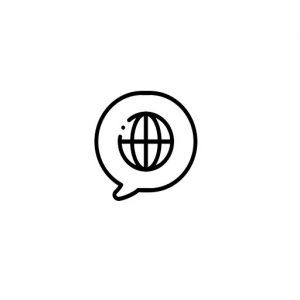What is Creativity?: At Spark! we define Creativity for children as, “I use my imagination while making, building, and doing things.”
How do you inspire creativity at home with your preschooler? Here are some ideas from The Whole You: A Guide to Life Creativity
USE YOUR SENSES: Pick a place you and your child find interesting. It could be a busy street corner, a park bench, a view of a snowy yard, etc. Spend 10 minutes there just soaking in the sights. Don’t try to draw or paint or photograph it—just fill your brain with everything you see. Talk about and notice the colors together—bright, muted, harsh, faded happy soothing? What kind of shapes do you see—smooth, jagged, angular, rounded, large, tiny? Look at the textures too—do things look soft, hard, shiny, rough, mushy, prickly? What about the light—is it bright, dim, harsh, soft, dappled, tinted with color? (p. 10)
USE YOUR NON-DOMINATE HAND TO CREATE ART: Get a set of finger paints or fat crayons or markers. Together with your child, use your non-dominate hand to create a picture. It doesn’t matter what you paint or draw—if you want, just make washes and splotches of color on the page. The point of using your non-dominant hand is to release yourselves from the responsibility of drawing something recognizable. You can’t control the hand anyway, so let go a little. If you and your children still find yourself trying really hard to draw something “good”, put the paper on the floor and use your feet! (P. 11-12)
GO NUTS WITH PENCIL RUBBING: Collect some flat objects with interesting textures—coins, rough fabrics, woods, cardboard, plates, leaves, etc. Hold a sheet of paper on top of your object and rub a soft pencil lightly over the object until it leaves an impression. Use different colors and different kinds of paper for different effects. Try it with bigger stuff too—brick walls, license plates, tree trunks, etc. (p. 13)
PUT TOGETHER A PHOTO COLLAGE. Dig out a bunch of old photos or grab a camera and shoot new photos. Print them out. They can be pictures of friends, pets, street signs, objects, anything you and your children like. Put them together in a collage. Cut them up, mix them up in different combinations, add captions or decorations. (p. 15).
PICK AN EMOTION (joy, sadness, fear, love, anger, etc.). Ask your child, “What colors go with this emotion to you?” Using those colors, have your child create an image (by drawing, painting, sculpting, collage, or anything) that expresses that emotion. (p. 16)
A SOUND ACTIVITY: For one day work with your child to listen for sounds or rhythms that are striking, unusual, or just interesting to you both, and make a note of them (examples: the squeak-squeak of chalk on the chalkboard, the clanging of dishes and trays in the cafeteria, the thud of a can dropping out of the soda machine, etc.). Create your own set of at-home rhythm makers and try out different sounds and rhythms: drums, cymbals, maracas, your body, etc.
MOVEMENT: Pick out a piece of classical music. Get into comfortable clothes and move with the music with your child. Don’t worry about doing anything that looks like actual dancing—instead, just move your body around in a way that seems to fit the music. Do whatever feels right to you…(p. 43). Put on a show for your family.
ROLE PLAY: Make a list of 10 roles you’d like to play. These can be things you aspire to be in real life or total fantasies. Some examples: a witch, an officer on a space ship, a pioneer of the Old West, a war hero, a rock star, a member of royalty, a belly dancer, a judge, a doctor, a character from your favorite TV show (p. 48). Then create a role play.
(Source: The Whole You: A Guide to Life Creativity by J. Kim, Scholastic, 2002.)
_____________________________
CREATIVITY, as it RELATES TO STEM PROGRAMMING at SPARK!
Creativity collides with the third step in the Design Thinking Process: IDEATION, the human-centered design thinking process we use at Spark! Discovery Preschool, in St. Vrain Valley Schools. In preschool, our children spend time in this part of the process generating creative ideas. The goal of ideation is to both 1) generate and 2) explore a lot of different, creative ideas and perspectives. When generating ideas with preschoolers, they often will mimic ideas already found in their environment or ideas from their background knowledge. However, preschoolers do not contain many rigid mind-sets found in adults about their ideas and ability to be creative, and because of this, they have the capacity to create new and novel ideas. Adults judge their ideas and the ideas of others as they are brainstorming—preschoolers, on the whole feel they have the best and most amazing ideas ever. Just ask them! They will tell you. In my experience, adults can easily generate a large volume of brainstorm ideas—this is true because they have had more time to build perspective, experiences and background. With preschoolers, we need to help them set goals for the number of ideas they will generate in a certain amount of time. With adults, we have to encourage wild ideas; they need prompting to step outside of what is realistic and feasible. However with preschoolers, they often conjure up crazy ideas all on their own because they are not worried about the social aspects of brainstorming such as, “Will people like my idea?” or, “Do I like my idea?” or, “Is this worth adding to the list—everyone else has such better ideas?!” Preschoolers often surprise us with their ability to see things in creative and different ways.
Another area where the profile of CREATIVITY meshes with the design thinking process is during the fourth step, PROTOTYPING. In preschool, our children spend time in the creative process of generating low resolution prototypes to test their ideas. Using many recycled items and a few well-thought-out materials, early learners can build a model for their idea to create meaning and use for someone else. When prototyping with preschoolers they do not hesitate to begin building. It’s what their brains are meant to be doing at this age. In reality it’s more of a challenge to get them to stop. When prototyping with adults in professional development we host, we often see a reluctance to move the idea from paper to prototype, and we’re often heard telling adults, “Stop planning! Do something!” or, “Less talk, more action.” With preschoolers, it’s the opposite. With preschoolers, we want them to create a prototype, with which others can test, use, and react. When prototyping at any age we should build with the user in mind–this is a place where early learners are challenged because they are so egocentric. Asking questions such as, “What do you expect to happen? What are you testing? What will the other person think about this?” helps us to start preschoolers thinking about how other people or users will view the prototype. In adults, it’s helpful if they can identify a variable, that is, if they can identify what is being tested with the prototype; a prototype should answer a question when it’s tested. The reason we build a prototype is to create an experience where users can use them, experience them, and react to them. As the d.school says, “If a picture is worth a thousand words, a prototype is worth a thousand pictures.”
This month, we’d invite you to work on IDEATION and PROTOTYPING with your preschooler in order to build creativity. The first place to look is in your recycling bin, and then you’ll need tape, scissors, and glue.
By Paige Gordon, Administrator, 10-28-14


